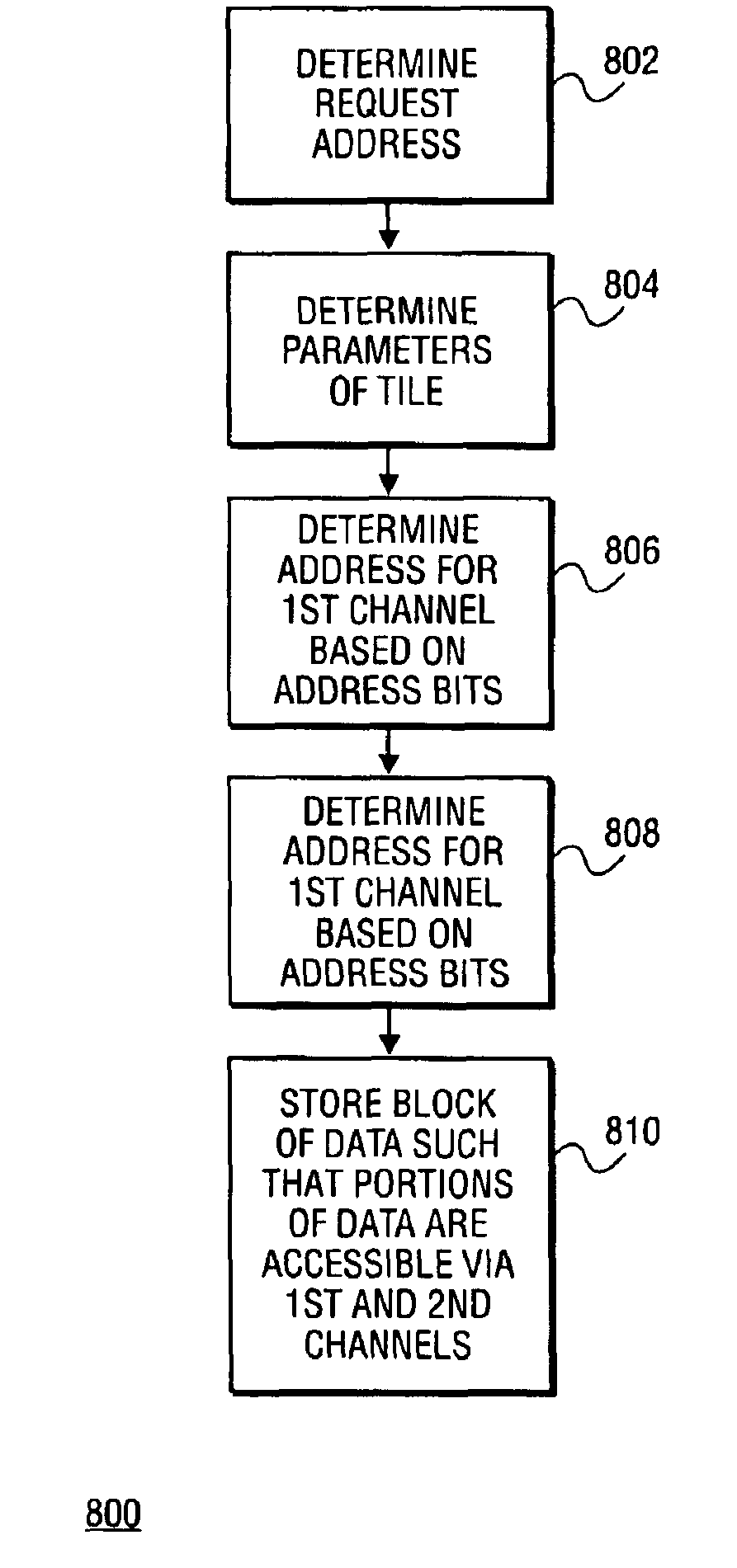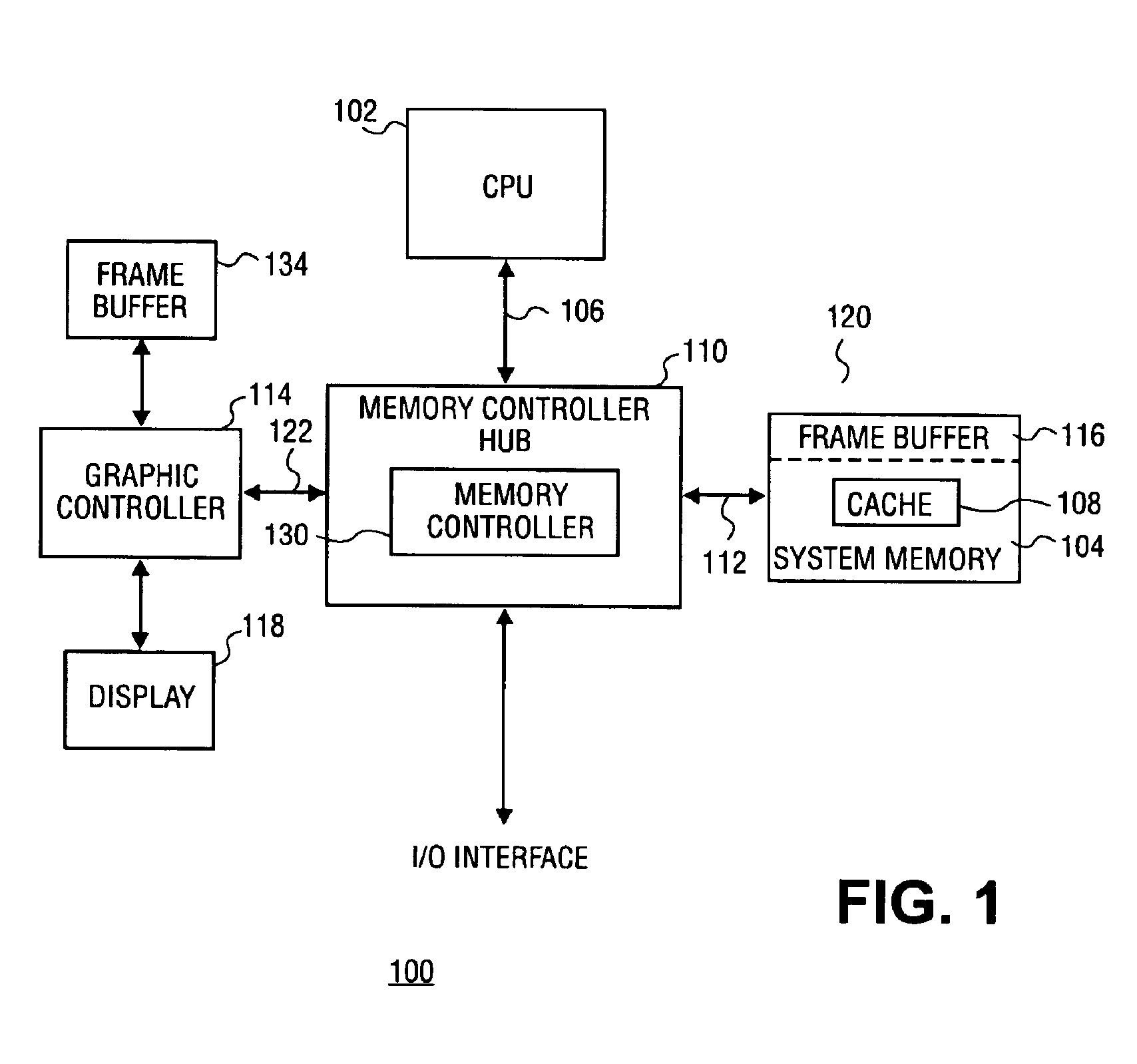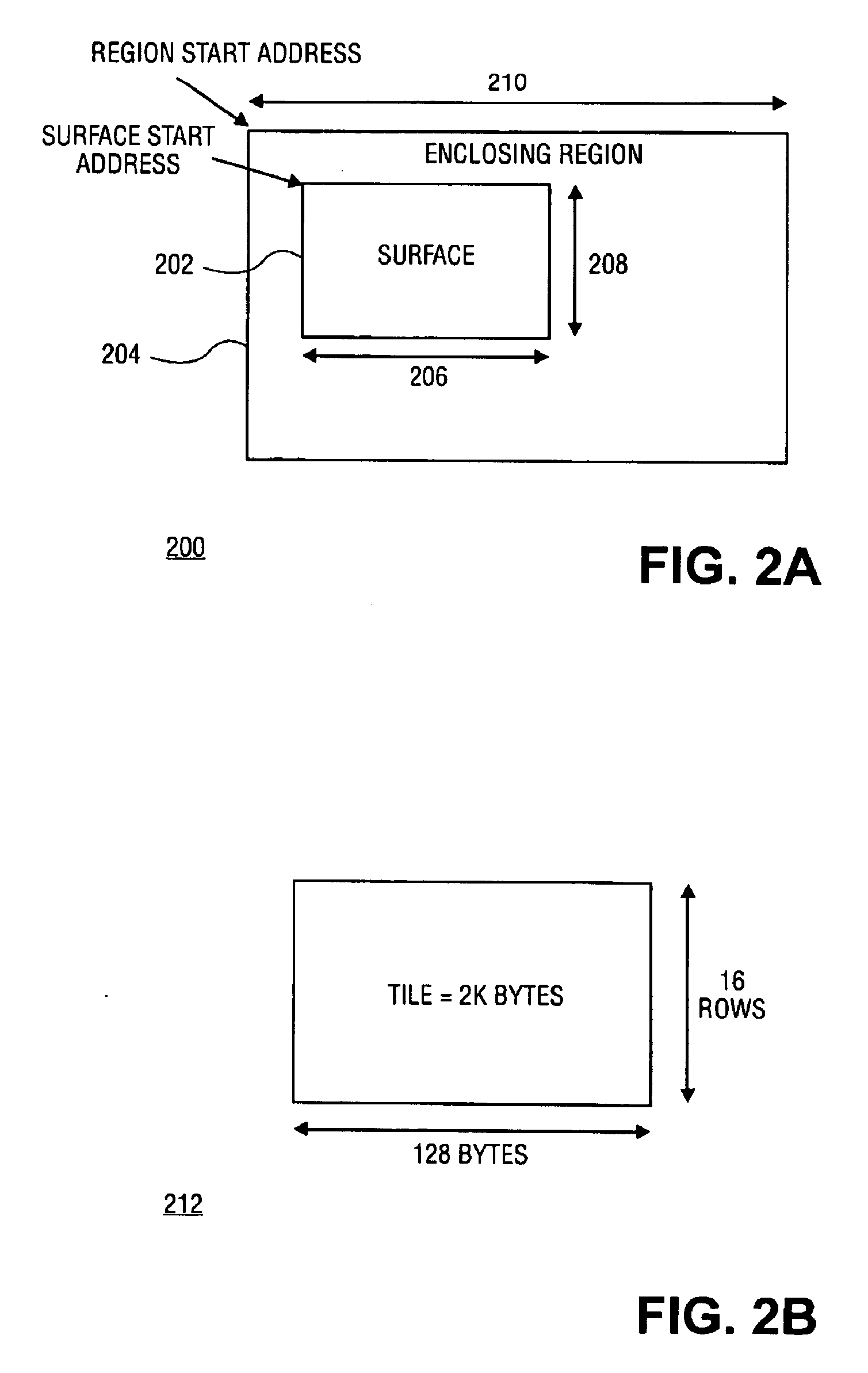Dual memory channel interleaving for graphics and video
a graphics and video technology, applied in the field of computer systems, can solve the problems of increased memory latencies and lower performan
- Summary
- Abstract
- Description
- Claims
- Application Information
AI Technical Summary
Problems solved by technology
Method used
Image
Examples
case 1
r Tile, X Walk Data Request for an Aligned Hword (2 Owords on the Same Scan Line) (See FIG. 9)
[0052]Request Address (31:5)=Translated Tiled Address (31:5)
[0053]If (Tiled Address [8]=“0” AND Tiled Address [7]=“0”) OR
[0054](Tiled Address [8]=“1” AND Tiled Address [7]=“1”)
[0055]Channel 0=Request Address
[0056]Channel 1=Request Address+16 B
[0057]If (Tiled Address [8]=“0” AND Tiled Address [7]=“1”) OR
[0058](Tiled Address [8]=“1” AND Tiled Address [7]=“0”)
[0059]Channel 0=Request Address+16 B
[0060]Channel 1=Request Address
[0061]Based on the order in which the initiator needs the data to be returned, the walk bits have to be selected. A request less than an Hword will be a subset with the correct Qwords used for reads and qualified by byte enables for writes.
case 2
r Tile, Y Walk Data Request for 2 Adjacent Owords (Double Oword Aligned 2 Owords on Adjacent Same Scan Lines) (See FIG. 10)
[0062]Request Address (31:5)=Translated Tiled Address (31:5)
[0063](Tiled Address [4]=“0” AND Tiled Address [8]=“0”) OR
[0064](Tiled Address [4]=“1” AND Tiled Address [8]=“1”)
[0065]Channel 0=Request Address
[0066]Channel 1=Request Address+128 B
[0067]If (Tiled Address [4]=“0” AND Tiled Address [8]=“1”) OR
[0068](Tiled Address [4]=“1” AND Tiled Address [8]=“0”)
[0069]Channel 0=Request Address+128 B
[0070]Channel 1=Request Address
[0071]Based on order in which the initiator needs the data to be returned the walk bits have to be selected.
case 3
r Tile, Y Walk Data Request for 2 Owords Skipping One (Even or Odd Owords in an Aligned Quad Oword Region, 2 Owords on Alternate Scan Lines) (See FIG. 11)
[0072]Request Address (31:5)=Translated Tiled Address (31:5)
[0073]If (Tiled Address [4]=“0” AND Tiled Address [7]=“0”) OR
[0074](Tiled Address [4]=“1” AND Tiled Address [7]=“1”)
[0075]Channel 0=Request Address
[0076]Channel 1=Request Address+256 B
[0077]If (Tiled Address [4]=“0” AND Tiled Address [7]=“1”) OR
[0078](Tiled Address [4]=“1” AND Tiled Address [7]=“0”)
[0079]Channel 0=Request Address+256 B
[0080]Channel 1=Request Address
[0081]Based on order in which the initiator needs the data to be returned the walk bits have to be selected.
PUM
 Login to View More
Login to View More Abstract
Description
Claims
Application Information
 Login to View More
Login to View More - R&D
- Intellectual Property
- Life Sciences
- Materials
- Tech Scout
- Unparalleled Data Quality
- Higher Quality Content
- 60% Fewer Hallucinations
Browse by: Latest US Patents, China's latest patents, Technical Efficacy Thesaurus, Application Domain, Technology Topic, Popular Technical Reports.
© 2025 PatSnap. All rights reserved.Legal|Privacy policy|Modern Slavery Act Transparency Statement|Sitemap|About US| Contact US: help@patsnap.com



